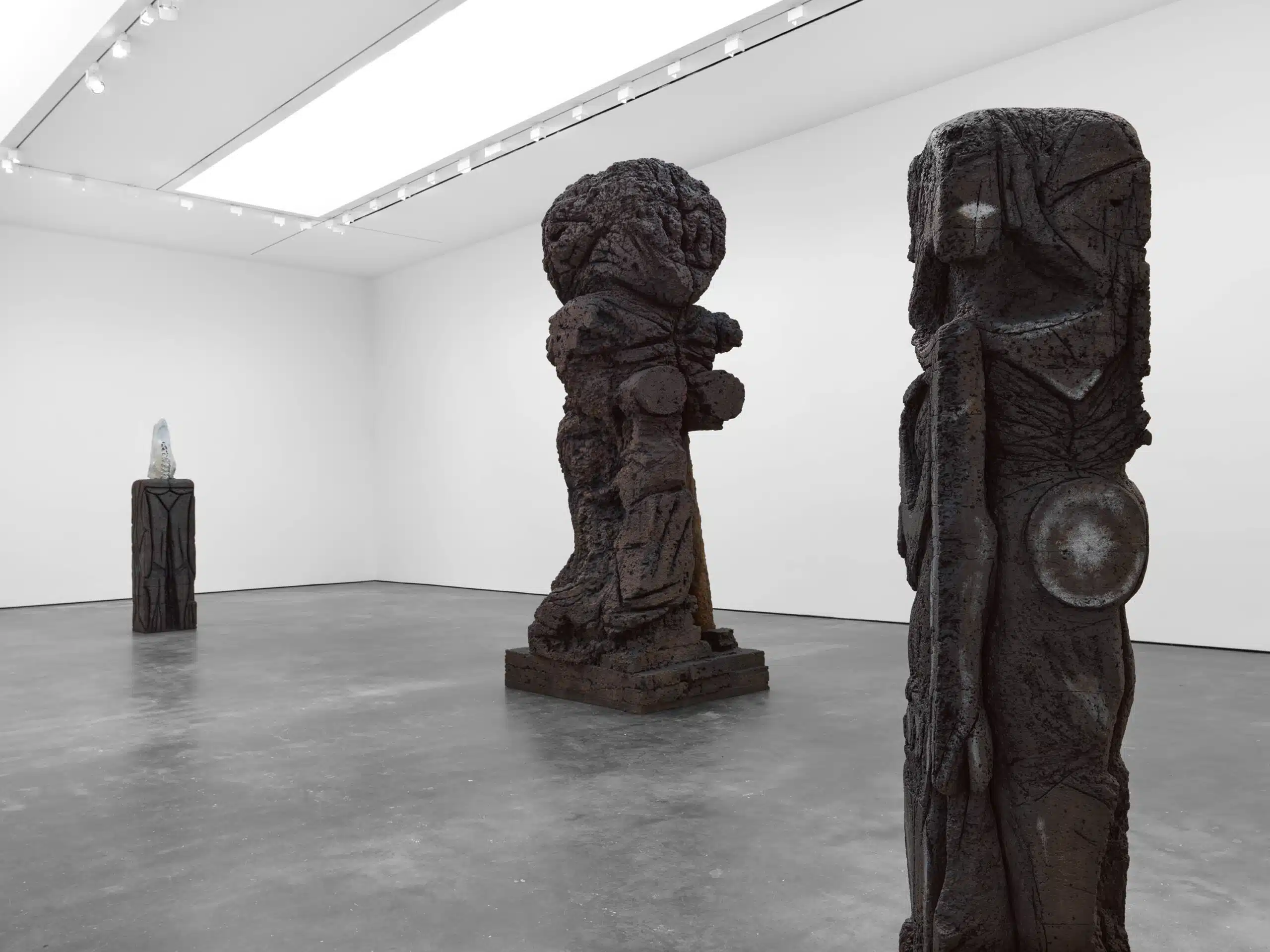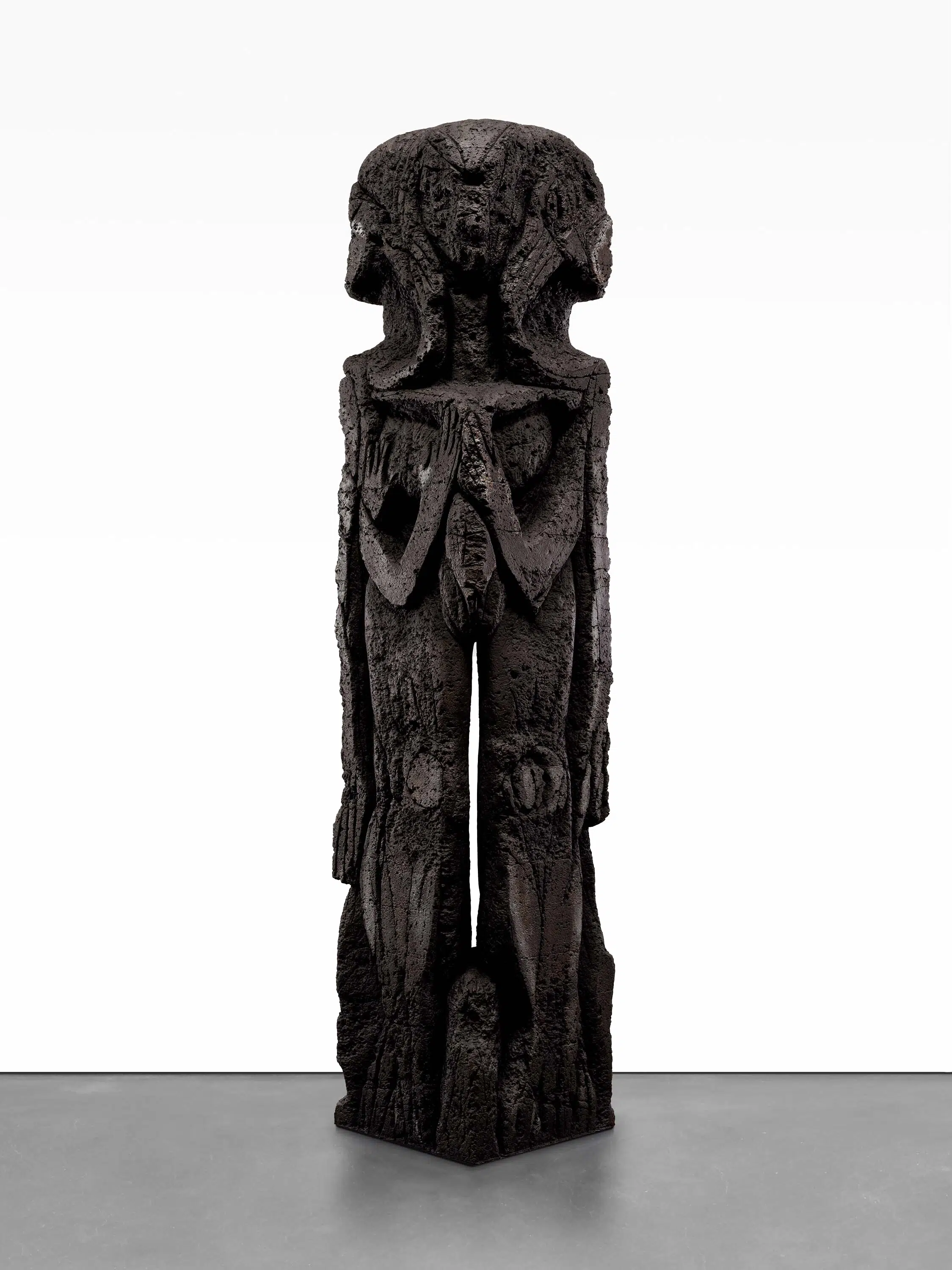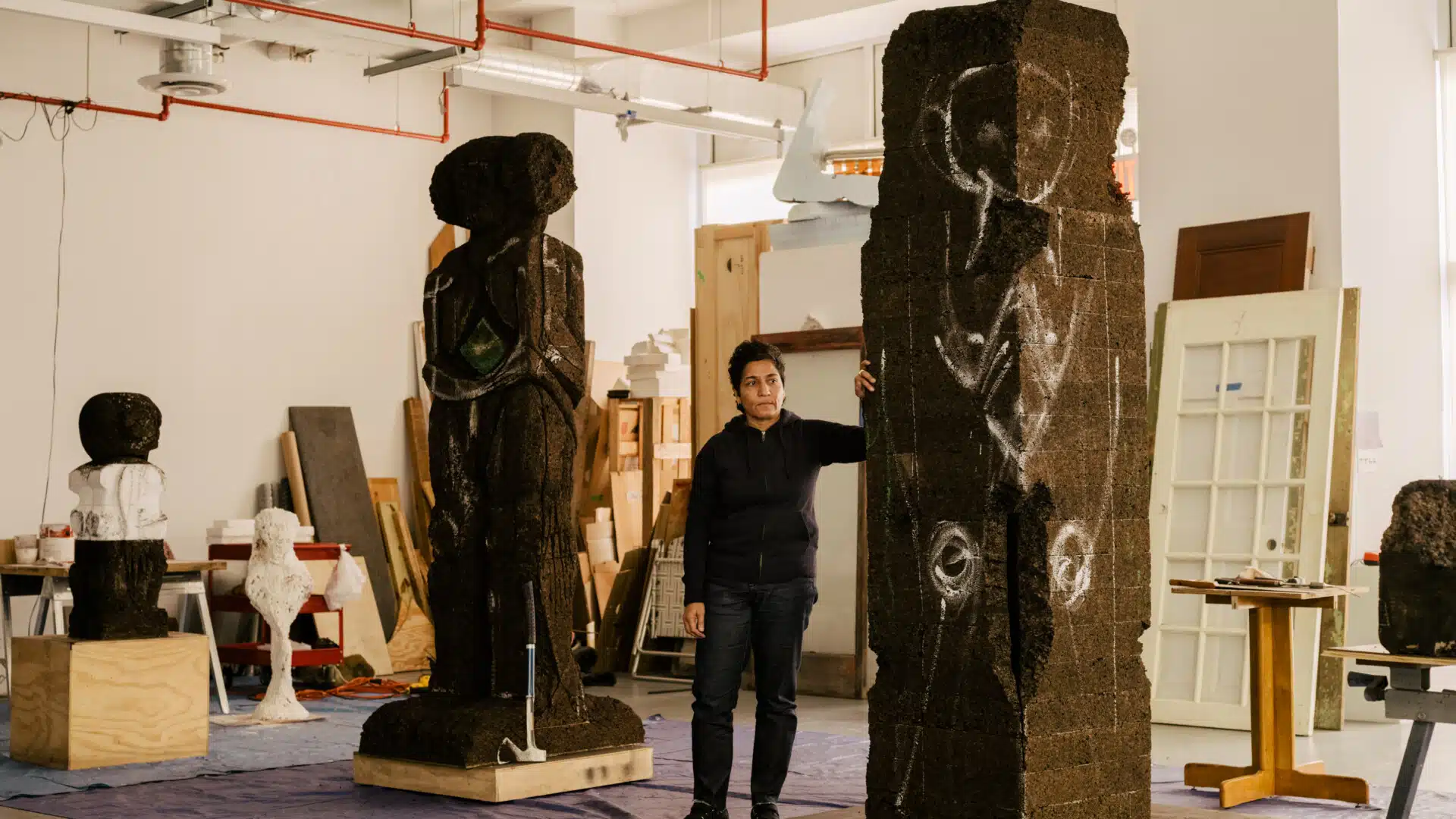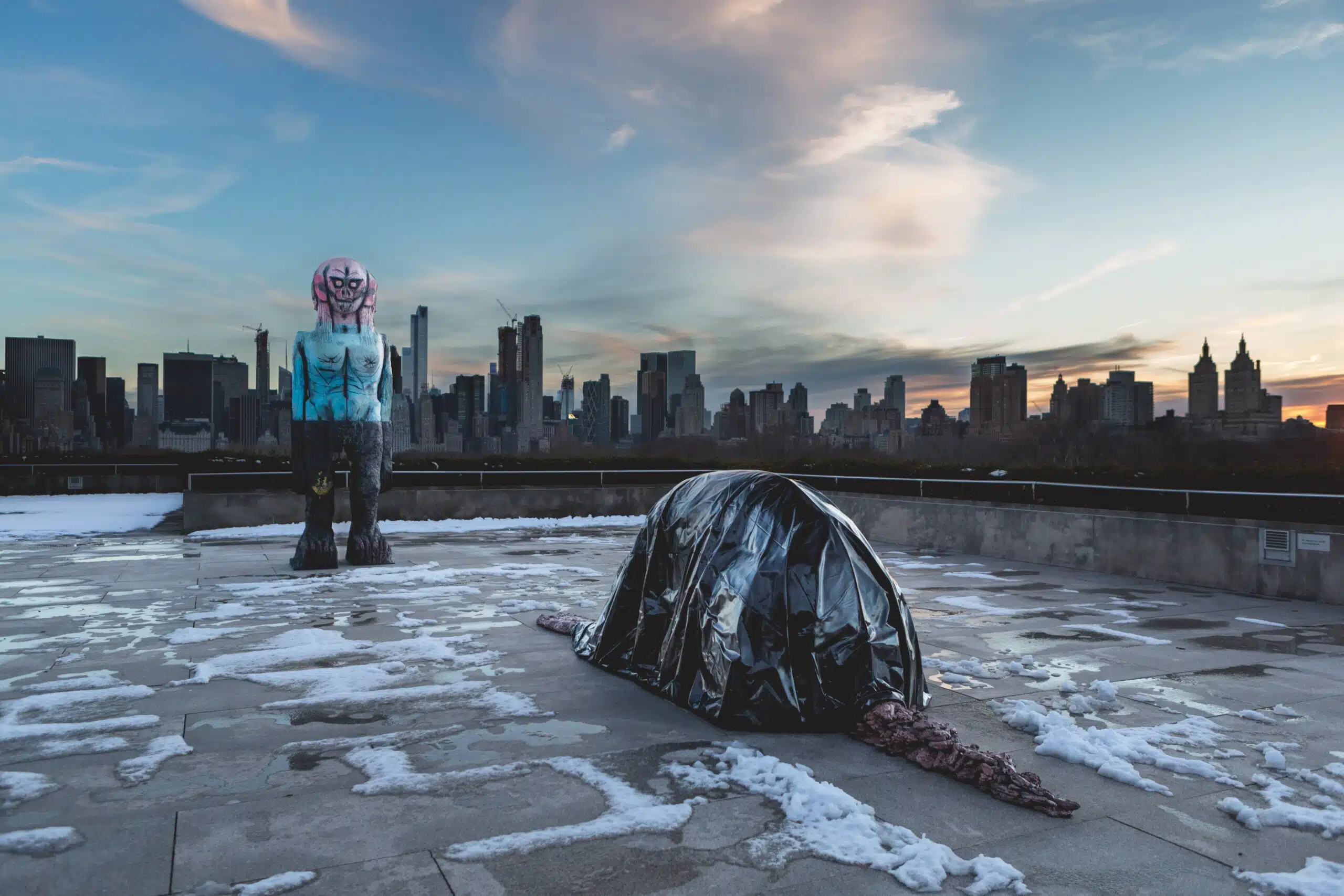TEXT: MAANAV JALAN
Huma Bhabha’s studio is housed in an old fire station in Poughkeepsie, New York, dating back to 1906. There is a water drain in the centre of the space and large garage doors through which the artist’s large-scale humanoid sculptures can travel in and out. A bank of found, gifted and collected materials such as cork, styrofoam and other construction materials can be found in the studio — which the artist stacks and carves into her now instantly-recognisable sculptural figures that have been described as ‘monsters’, ‘vengeful gods’ and emissaries of peace. The sculptures, made of characteristically light packing and construction materials, are sometimes cast into bronze, gaining weight and becoming material memorials to their fragile origins.
“I look at a lot of images when I am stuck,” the artist comments in her 2022 talk at the Hammer Museum, showing examples of previous inspirations alongside images of her works — stills from Stalker by the Soviet filmmaker Andrei Tarkovsky, and from other sci-fi and horror classics such as Jeepers Creepers; works by Joseph Beuys, Auguste Rodin, Constantin Brancusi, Alberto Giacometti, Pablo Picasso, Francis Bacon; scans of newspapers reporting on war, urban developmenet and ancient civilisation in Pakistan; photographs of sculptures taken by their sculptors; a photograph of a tank standing at the entrance of the Baghdad Museum, flanked by sculptures and contrasting with, Bhabha says “the frighteningly new, [in] an endless formula of symmetry.” Each reference modulates, “mutates”, the other. This is the nutrition (junk food) that her alien figures grow up on. Armed with secret knowledge, Bhabha’s extra-terrestrial giants can surprise us, in turns, riddling and speaking solemn truths.
Here we ask the artist more about her sculptural practice.


Top: Installation View, Huma Bhabha: Welcome…to The One Who Came, David Zwirner, New York, 2024; Bottom: Huma Bhabha, Maybe Nothing Maybe Everything, 2024, Patinated Bronze, © Huma Bhabha, Courtesy The Artist And David Zwirner
Can you describe your studio space in Poughkeepsie?
My current studio makes me think of one of my favorite photos of [sculptor, Constantin] Brancusi in his studio and the image of a large staircase from the [1939] Frankenstein movie. High ceilings and a view from above offer new possibilities of scale and theatricality.
How do you make the original sculptures for your bronze cast works? What toll does this take on you?
I make my sculptures from carving cork and modeling clay and sometimes they are assemblages built with armatures made from found objects, construction debris, wood and wire. The carving depending on the scale of the sculpture can be quite exhaustive.
What does the bronze casting do to the ‘counter-monument’ made of fragile materials such as cork?
When casting in bronze or any other material the inherent nature of the work transforms from one material into another in an alchemical way forever changing it. Something light and airy can become dense and heavy but retains the original appearance.
You have spoken about your sculptural work as looking ‘prehistoric and cartoony at the same time’. What does the mixing of registers do to the work?
My goal is to make a resonating visual impact and it’s natural for me to pick through my different materials and combine my influences and challenge the status quo in the hope of creating something profound and original. There is no high and low for me as long as it’s high quality.
Installation View, The Roof Garden Commission: Huma Bhabha, We Come In Peace, The Metropolitan Museum Of Art, New York, 2018. Photo By Hyla Skopitz. Image Courtesy The Metropolitan Museum Of Art, New York
Why is the ‘unnatural’ important to you?
I guess the ‘unnatural’ is important because it relates to the unfamiliar. That is why I like sci-fi because it allows a certain freedom of expression to be imaginative and creative and still be very much in the present.
Do you see your figures as interrupting or making trouble in any particular cultural, personal or psychic status quos?
I’m interested in beauty and offering an implied narrative by revisiting the history of figurative sculpture through the time machine of contemporary cinematic science fiction and horror; going beyond current reality but still making art of the present.
Is there an artistic community or movement that you see yourself within?
I hope so.
What kinds of images are you looking at right now?
It’s hard to escape images of the ravages of war.
Huma Bhabha lives and works in Poughkeepsie, New York. Her work will be shown by David Zwirner at India Art Fair 2025.



